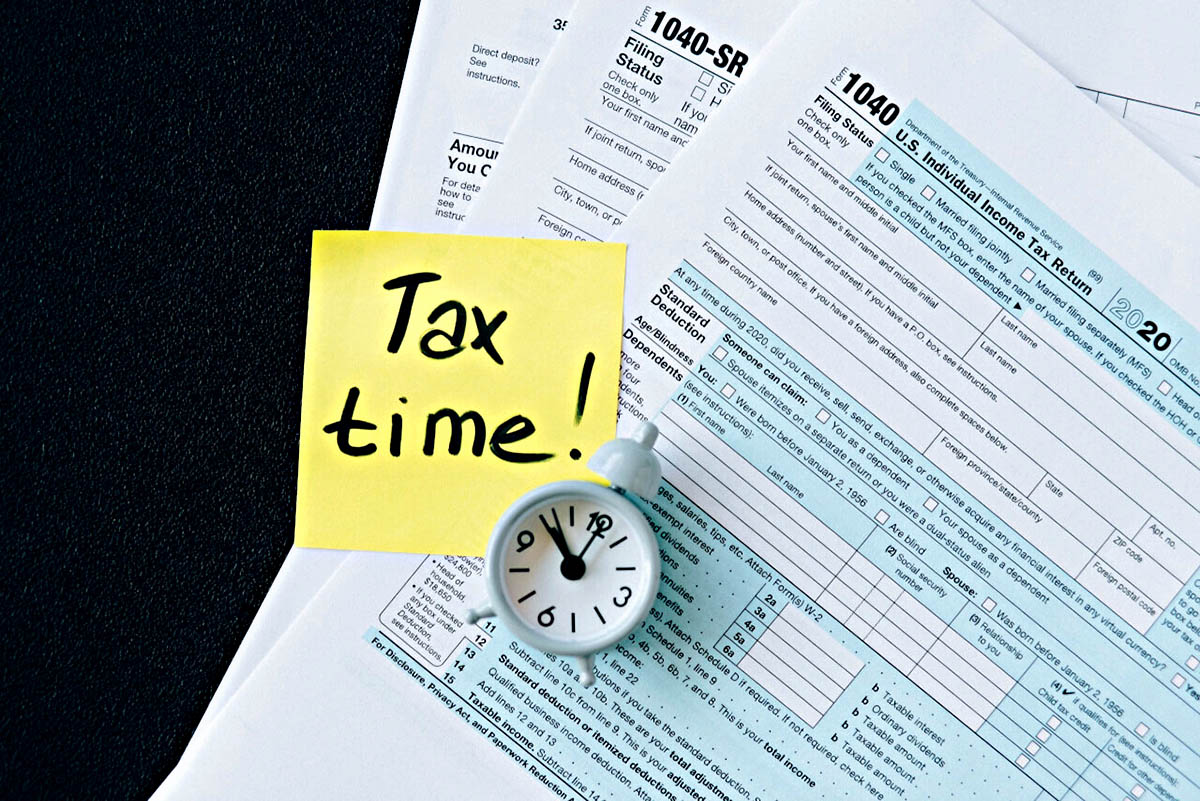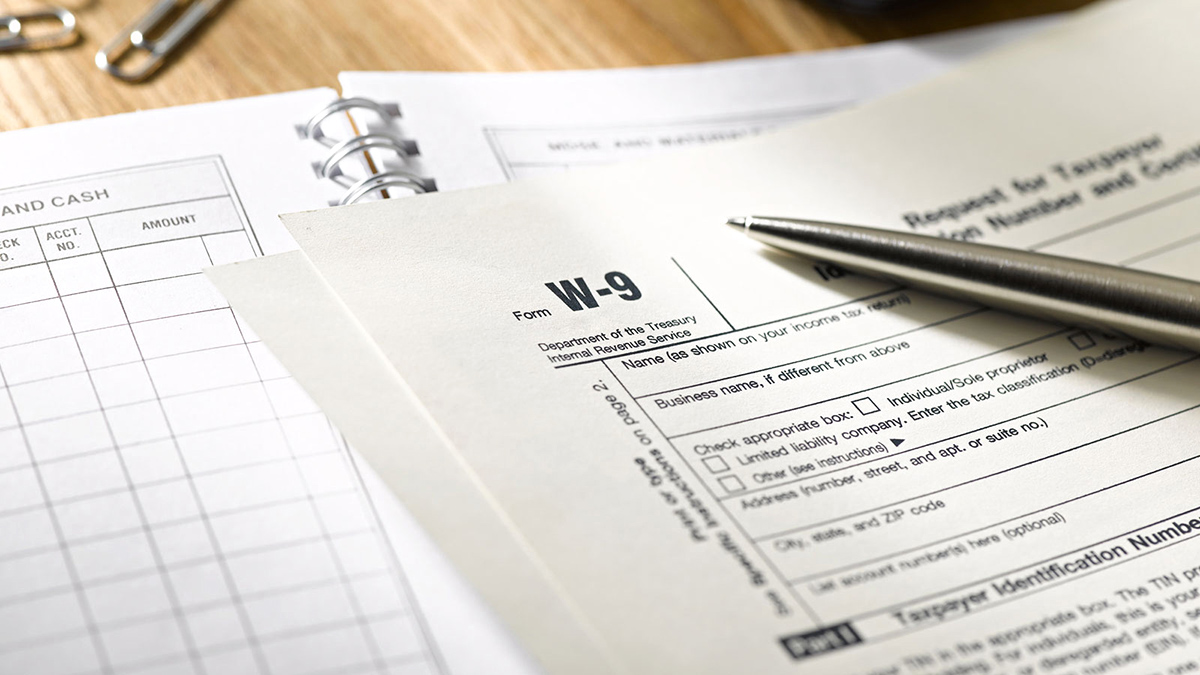

Finance
What Is My Tax Bracket In NYC
Published: January 20, 2024
Unsure about your tax bracket in NYC? Get expert advice on finance and find out where you stand in just a few simple steps.
(Many of the links in this article redirect to a specific reviewed product. Your purchase of these products through affiliate links helps to generate commission for LiveWell, at no extra cost. Learn more)
Table of Contents
Introduction
When it comes to understanding your taxes, one crucial aspect to consider is your tax bracket. A tax bracket refers to the range of income that is subject to a specific tax rate. It determines the percentage of your income that you have to pay in taxes. Knowing your tax bracket can help you plan your finances better and make informed decisions regarding your income and expenses.
Living in New York City (NYC) adds an additional layer of complexity to your tax situation. As one of the most expensive cities in the world, NYC has its own tax brackets that differ from the federal tax brackets. Understanding your tax bracket in NYC is essential to fully grasp your tax liability and effectively manage your finances.
In this article, we will explore what tax brackets are and how they work in NYC. We will also discuss the factors that determine your tax bracket and provide some tips on managing your tax bracket effectively. Whether you are a NYC resident or considering a move to the city, understanding your tax bracket is crucial for financial planning and maximizing your income.
Understanding Tax Brackets
Tax brackets are the ranges of income levels that determine how much income tax you owe. The tax system is progressive, which means that as your income increases, the tax rate you pay also increases. Tax brackets typically consist of several income ranges, each with its corresponding tax rate.
For example, if you fall within the 10% tax bracket, it means that a portion of your income is taxed at that rate. As you earn more and cross into the next tax bracket, only the income within that range will be subject to the higher tax rate.
It is important to note that tax brackets are marginal, meaning that you are not taxed at a single rate for your entire income. Rather, each portion of your income is taxed at different rates based on how it falls within the various tax brackets.
For instance, let’s say there are three tax brackets: 10%, 20%, and 30%. If you earn $50,000, the first $10,000 would be taxed at 10%, the next $20,000 would be taxed at 20%, and the remaining $20,000 would be taxed at 30%. This progressive tax system ensures that individuals with higher incomes contribute a larger proportion of their earnings in taxes.
Understanding tax brackets is essential for effective tax planning. By knowing which bracket you fall into, you can estimate your tax liability and implement strategies to minimize your tax burden.
Tax Brackets in NYC
Living in New York City comes with its own set of tax brackets, which may differ from the federal tax brackets. The state and local tax rates in NYC can impact your overall tax liability. In addition to federal income tax, NYC residents are subject to state income tax and New York City local income tax.
As of 2021, New York State has several income tax brackets ranging from 4% to 8.82%. The New York City local income tax rates range from 3.078% to 3.876%. These rates are applied to your taxable income within the respective brackets.
To determine your tax liability in NYC, you need to consider both the state and local income tax brackets. Depending on your income level, you may fall into different brackets for each tax jurisdiction.
For example, if you are a single filer and your taxable income falls between $17,150 and $43,000, you would be in the 6.33% New York State tax bracket. At the same time, for the NYC local income tax, you may fall into the 3.078% tax bracket.
It is important to note that these tax brackets can change over time. Therefore, staying informed and updated on the latest tax rates and brackets is crucial for accurate tax planning.
Keep in mind that in addition to income taxes, NYC residents may also be subject to other taxes, such as property taxes, sales tax, and various fees. Understanding the complete tax picture in NYC can help you effectively manage your tax obligations.
Determining Your Tax Bracket
To determine your tax bracket, you need to know your taxable income. Your taxable income is the amount left after deducting any allowable deductions and exemptions from your total income.
In order to accurately calculate your taxable income, you need to take into account various factors such as wages, self-employment income, investment income, and any other sources of income. It is essential to maintain proper documentation and accurately report all your income sources to ensure compliance with tax regulations.
Once you have determined your taxable income, you can refer to the tax brackets applicable to your jurisdiction, whether federal, state, or local. Find the income range that encompasses your taxable income to identify your tax bracket.
For example, if you have a taxable income of $60,000 and you are a single filer, you would need to refer to the federal tax brackets to determine your tax bracket for federal taxes. Let’s assume that in this case, you fall into the 22% tax bracket for federal taxes.
Similarly, for determining your tax bracket in NYC, you would need to consider both the New York State tax brackets and the New York City local tax brackets. Based on your taxable income, you can identify the appropriate tax brackets for each jurisdiction.
It is important to note that tax brackets can change annually, so it is essential to consult the most recent tax tables or consult with a tax professional to ensure accurate determination of your tax bracket.
Understanding how to determine your tax bracket allows you to better estimate your tax liability and plan your finances accordingly. By knowing your tax bracket, you can explore strategies to optimize your tax situation, such as maximizing deductions and taking advantage of tax credits.
Factors Affecting Your Tax Bracket
Several key factors can influence the tax bracket in which you fall. Understanding these factors can help you make informed decisions and potentially manage your tax liability.
1. Income Level: Your income level is the primary factor determining your tax bracket. As your income increases, you may move into higher tax brackets, which means a higher percentage of your income will be subject to taxation.
2. Filing Status: Your filing status, such as single, married filing jointly, married filing separately, or head of household, can impact your tax bracket. Different filing statuses may have different tax brackets and deductions available to them.
3. Deductions and Credits: Certain deductions and tax credits can lower your taxable income and potentially move you into a lower tax bracket. Examples of deductions may include student loan interest, mortgage interest, and contributions to retirement accounts. Tax credits, such as the Child Tax Credit or the Earned Income Tax Credit, can directly reduce the amount of tax you owe.
4. Changes in Tax Laws: Tax laws can change over time, affecting tax brackets. It is important to stay updated on any changes in tax regulations that may impact your tax bracket.
5. State and Local Taxes: If you live in a jurisdiction that has its own income tax, like NYC, the state and local tax rates can affect your overall tax bracket. Different states and localities may have different tax brackets and rates.
6. Additional Income Sources: Income from investments, self-employment, or rental properties can push you into a higher tax bracket. It’s important to consider all sources of income when determining your tax bracket.
7. Age and Eligibility for Retirement Benefits: As you near retirement age, you may become eligible for certain retirement benefits or qualify for tax breaks specifically designed for seniors. These factors can impact your tax bracket and overall tax liability.
Understanding these factors and their impact on your tax bracket allows you to make informed financial decisions. It is advisable to consult with a tax professional to ensure you are maximizing tax benefits while staying compliant with tax regulations.
Tips for Managing Your Tax Bracket
Managing your tax bracket effectively can help you optimize your tax situation and potentially reduce your tax liability. Consider these tips to help you navigate your tax bracket:
1. Take Advantage of Deductions and Credits: Explore tax deductions and credits available to you. Make sure to keep track of expenses that qualify for deductions, such as charitable contributions or educational expenses. Utilize tax credits, like the Child Tax Credit or energy-efficient home improvements, to lower your tax liability.
2. Optimize Retirement Contributions: Contributions to retirement accounts, such as a 401(k) or IRA, can lower your taxable income. By lowering your taxable income, you may be able to stay in a lower tax bracket or qualify for tax benefits. Maximize your contributions to take advantage of potential tax savings and build your retirement savings simultaneously.
3. Timing of Income and Expenses: Consider the timing of income and expenses to strategically manage your tax bracket. For example, if you anticipate a higher income year, you may want to defer income into the following year or accelerate deductible expenses to lower your taxable income for the current year.
4. Utilize Tax-Advantaged Accounts: Utilize tax-advantaged accounts, such as a Health Savings Account (HSA) or Flexible Spending Account (FSA), to pay for qualified medical expenses with pre-tax dollars. This can help reduce your taxable income and potentially keep you in a lower tax bracket.
5. Plan for Capital Gains: If you have investments, consider the impact of capital gains on your tax bracket. Timing the sale of investments strategically can help minimize the tax impact. Holding investments for more than a year may qualify for lower long-term capital gains tax rates.
6. Consult with a Tax Professional: Tax laws and regulations can be complex, and it’s always beneficial to seek advice from a tax professional. A tax professional can provide personalized guidance based on your specific financial situation and help you make tax-efficient decisions.
Managing your tax bracket requires careful consideration of your income, deductions, and credits. By taking proactive steps and seeking professional advice, you can optimize your tax situation and potentially reduce your tax burden.
Conclusion
Understanding your tax bracket is essential for effective financial planning and managing your tax liability. Whether you live in New York City or any other jurisdiction, knowing how tax brackets work can help you make informed decisions regarding your income, expenses, and overall financial strategy.
Living in NYC adds complexity to your tax situation, with both state and local income taxes to consider. Familiarize yourself with the tax rates and brackets specific to NYC to accurately estimate your tax liability.
Factors such as income level, filing status, deductions, and credits can all affect your tax bracket. By carefully managing these factors, you can potentially optimize your tax situation and minimize your tax burden.
Remember to take advantage of available deductions and credits, optimize retirement contributions, and strategically plan the timing of income and expenses. Additionally, consulting with a tax professional can provide valuable insights tailored to your specific financial circumstances.
By staying informed about changes in tax laws and regulations and implementing effective tax strategies, you can navigate your tax bracket with confidence and make the most of your financial resources.
Managing your tax bracket is an ongoing process that requires regular evaluation and adjustment. By staying proactive and seeking professional advice when needed, you can navigate the complexities of tax brackets and achieve financial success.














